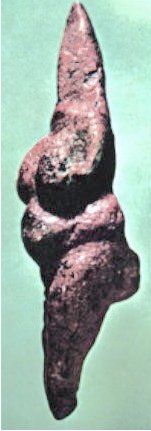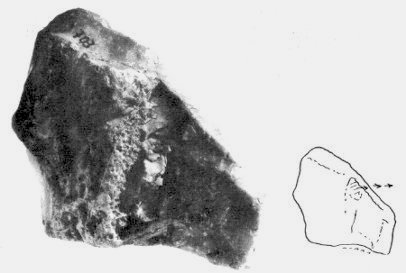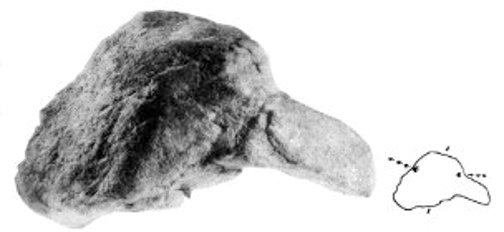
Paleolithic art is of two types: three-dimensional (lithic sculpture), and two-dimensional (engraving on bone and painting on wall).
These two different types of art have different territorial origins and religious representations, and also when in Europe these two civilizations were living in a same region, there has never been intermingling in how much they were belonging to two deeply different psychological and spiritual worlds.
In the Upper Paleolithic (from 28,000 to 12,000 years ago) two-dimensional art is widespread in Western Europe, particularly in France (Lascaux cave, Font-de-Gaume, Cosquer ecc.) and in Spain ( Altamira cave, las Manos, El Castillo etc.) with representations of animals, generally in movement, of very high artistic quality for composition, style and color.
In this type of two-dimensional art man is not depicted.
From the representations of only animals it is detected that these civilizations did not have deity, and that their religion, not still interpreted, probably was mostly connected to hunting propitiatory rites.
I place the two-dimensional Paleolithic art in a hypothetical "Eastern Civilization" still to define, transiting in Europe.
The three-dimensional art of the Paleolithic (lithic sculpture) is less known than the zoomorphic paintings in cave, but it has been more studied and personally I think that it represents the "western Civilization".
In my opinion, the Paleolithic sculpture was in function of the religion and was of four types, in how much it represented four different types of deities, that we find in all the Paleolithic, Lower, Middle and Upper.
The geographical distribution, ascertained by origin and evolution, is Europe and the Middle East.
The deity more known is the sculpture of naked woman without feet that the palethnologists have defined "Venus" (Fig.1), which can be interpreted is like "goddess of fertility", and like "goddess of love".

In the Neolithic and in the Age of metals, many sculptures of naked women (evolution of the Paleolithic ones) are defined "Mother goddess". Such definition seems to me improper, since the "Mother goddess" must have the child in her arms.
The second type is the sculpture of two-faced human head (two human heads joined at the neck) (Fig.2), that can also be bicephalic and tricephalic.

The third type is the sculpture of the head of an animal (Fig.3) which in mammals can be can be depicted with a body part. The sacred animal.

The fourth type is the sculpture of bicephalic head of man and animal (Fig.4), bicephalic head of animal with animal, and artistic man-animal hybrid with mixed human-animal and also animal-animal characteristics.

These four types of divinities are always present in the 12,000 years of the post-Paleolithic period, and are also recognizable in complex arrangements of an aesthetic type, and also of a religious type (demons, sphinxes, sirens, and so on), as well as in a wide variety of artistic styles that can deform the image with reduction of organs or addition of decorations.